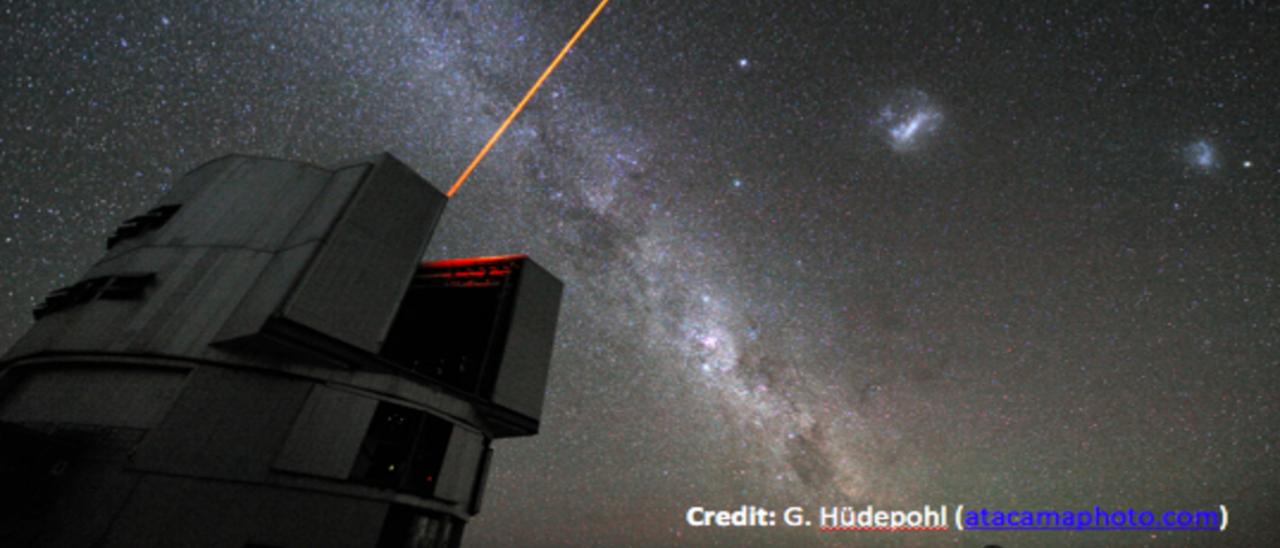General
Galaxy formation and evolution is a fundamental Astrophysical problem. Its study requires “travelling back in time”, for which there are two complementary approaches. One is to analyse galaxy properties as a function of red-shift. Our team focuses on the other approach, called “Galactic Archaeology”. It is based on the determination of galaxy properties from the study of their resolved stars. Depending on their mass, stars can live as long as a Hubble time, thus allowing to study in exquisite detail how galaxies have evolved from the early Universe to the present time. This research is one of the main drivers of major international projects, both observational (such as the on-going Gaia mission and SDSS surveys, and the planned WHT/WEAVE, LSST, VISTA/4MOST, DESI, E-ELT/HARMONI, to name a few), and theoretical (such as Nihao, Magic and Auriga hydrodynamical cosmological simulations), in most of which members of our team are involved. This ensures that Galactic Archaelogy will be at the forefront of astronomical research for a long time.
The objective of this project is to understand the formation and evolution of galaxies of different morphological types, using the many local examples that can be resolved into individual stars, and which, therefore can be studied in a detail impossible elsewhere. In particular, the Local Group and its immediate surroundings contain about 80 galaxies of different morphological types. Among these, the largest are spiral galaxies (the Milky Way, M31 and M33), a dozen of them are (dwarf) irregulars and the rest are early-type systems. Thus, we can study galaxies of different morphological types, from the Milky Way down to the smallest galactic scales, which are those challenging our understanding of what a "galaxy" is.
We aim to derive their evolutionary history using a set of complementary techniques: I) using deep photometry reaching the old main sequence turn-offs, it is possible to derive the full star formation history over the entire galaxy's life; ii) spectroscopic studies of individual stars add direct information on the kinematics and chemical abundances of the different stellar populations; iii) for the most nearby systems, the inclusion of accurate astrometric measurements yields information on the distance (and thus absolute brightness), the orbital motion of the system and can even deliver the full 6D phase-space information of sub-samples of stars; iv) the study of variable stars such as Cepheids and RR Lyrae provide independent constraints on metallicities and ages of the populations they belong to. These observations offer invaluable, rich information, that can be interpreted using hydrodynamic cosmological simulations of galaxy formation that model a wide range of important physical processes.
Members
Results
Our group investigates the formation and evolution of the Milky Way and nearby galaxies by combining stellar kinematics, chemical abundances, and star formation histories. Recent results include the discovery of a new extremely metal-poor population in Sculptor, studies of Sextans with VLT/FLAMES, and evidence against a dark matter cusp in Sculptor. We also published work on the chemical and dynamical properties of metal-poor stars in the Milky Way, the origin of the Galactic disk and bar, and the application of machine learning to stellar population studies.
As part of the ChronoGal project, we developed CMDft.Gaia, a tool to derive dynamically evolved star formation histories. Using it, we explored the thin and thick disks, the Gaia-Sausage-Enceladus merger, the oldest Galactic stars, and moving groups near the Sun. The team is also active in international surveys (WEAVE, 4MOST, HRMOS, Pristine) and leads projects on variable stars as distance indicators, combining Gaia data with spectroscopy and multi-band photometry.
Below a list of highlights from the group activities in 2024. For a more general overview see publication list and this webpage.
1. We have re-determined the properties of the chemo-kinematic stellar components of the Sculptor dwarf spheroidal galaxy, using the largest homogeneous data-set of velocities and metallicities. We unveiled a potential third extreme metal-poor population, that could be associated with a recent minor merger (Arroyo-Polonio et al. 2024).
2. G. Thomas has been awarded funding for the ISSI international team 'AsteroSHOP'.
3. We have obtained for the first time the dynamically evolved star formation histories of the kinematic thick and thin disc, independently, revealing with unique detail the kinematic and metallicity evolution of the Milky Way disc as a function of age (Fernández-Alvar et al. 2025, in press).







